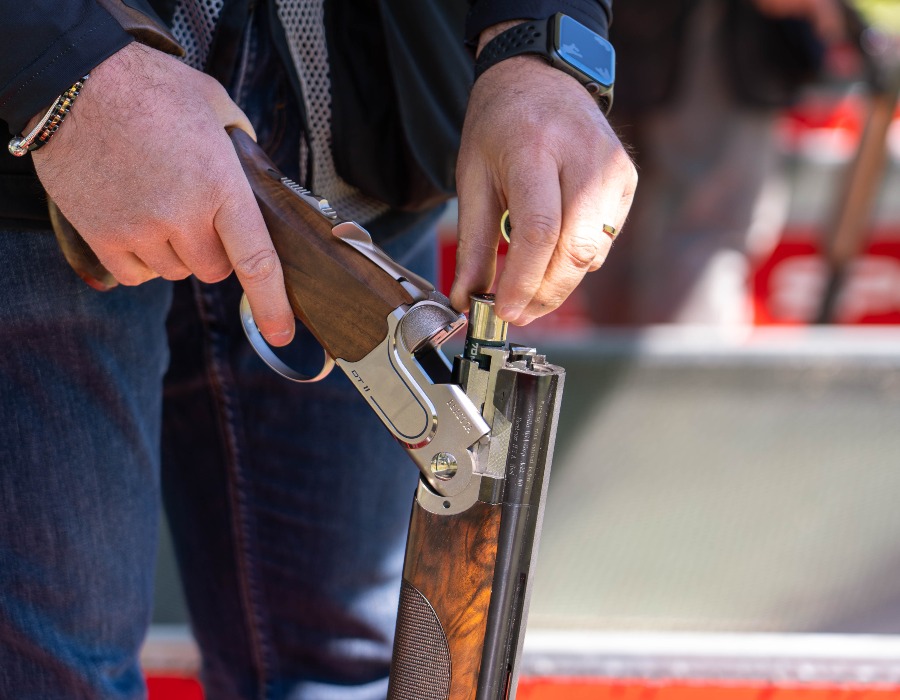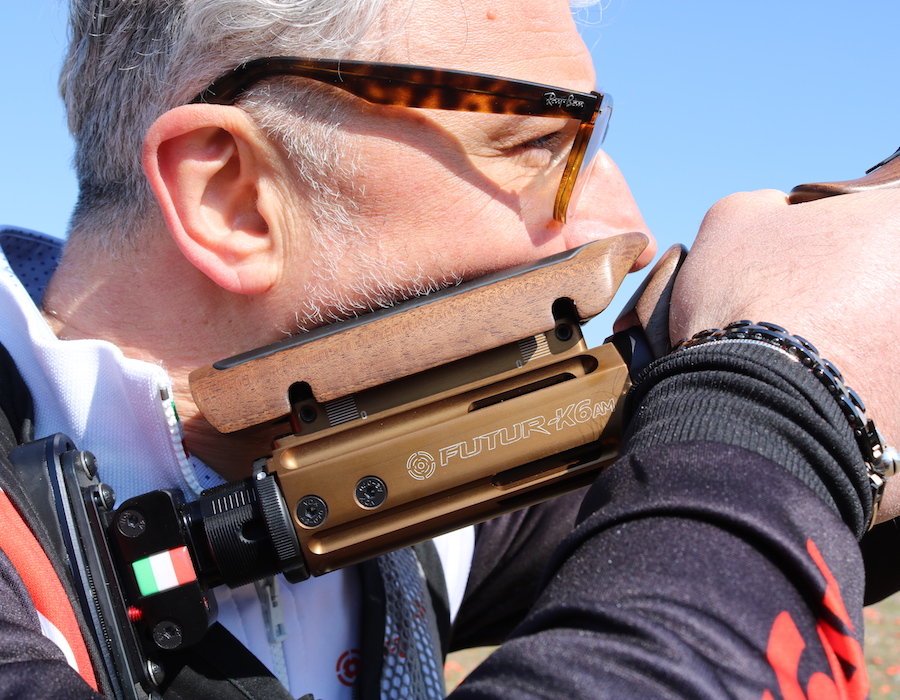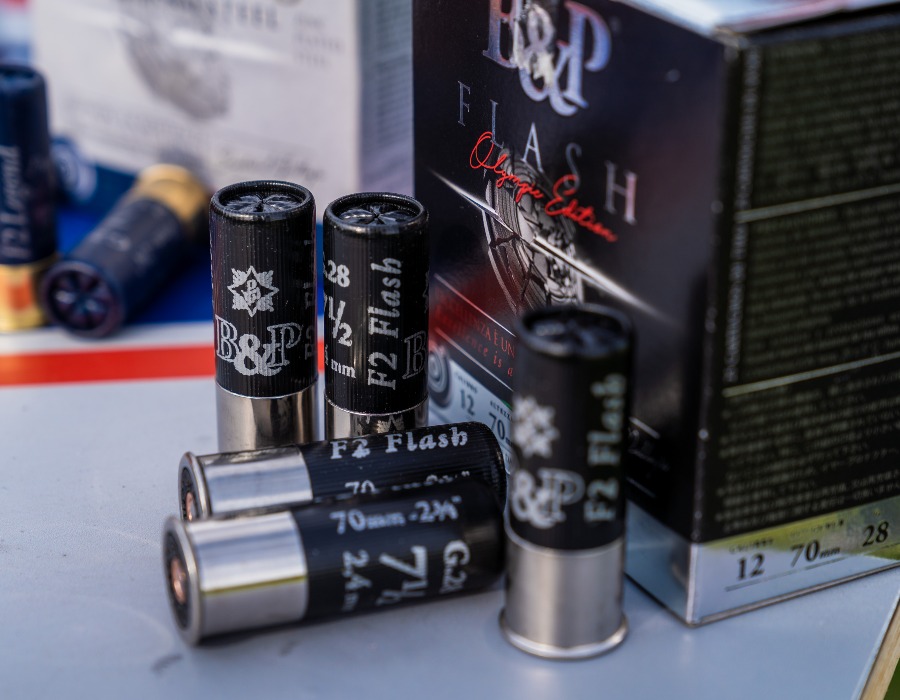Today, there are numerous alternatives of ammunition for clay pigeon shooting, giving shooters a wide range of cartridges to use. In this article, we will take a look at which cartridges you should choose for the trap specialty and why.
However, having such a wide range of choices can lead to confusion, especially if you are a novice. This is true because different ammunition, with different capabilities in terms of speed, power, and range, can influence the shooter’s performance by interacting with their timing and shooting style.
We start with the assumption that the ammunition used must adapt to the shooter’s technical specifications and their way of shooting, moving, fluidity, and so on.
So, the right trap cartridge must have the following requirements:

1. Speed
There is no doubt that a fast cartridge will hit the target first.
Contextualizing the matter in the practice of trap, this is a very important aspect as the engagement of the target already takes place over a considerable distance and any recovery of the second barrel is at the limits of the shotgun’s effective range and ammunition.
Therefore, the speed of the charge seems to be decisive for the choice of the cartridge.
This allows the shooter to immediately reach the target after they have engaged it for a few seconds, and, with the shotgun in motion or shooting suddenly just ahead of the target, they let the shot go.
The solution seems obvious, but not everything is as simple as it seems. Ammunition with high-speed performance – an HV, as it is defined – also has considerable pressure peaks.
These result in a sharp and decisive recoil and a greater rotation, and possible tipping of the shotgun.
All of these factors, whether they occur together or individually as a result of the detonation, still cause a problem for the shooter.
A strong recoil causes physical exhaustion, shoulder pain, and cheekbone discomfort during long training sessions and in competitions.

Considering that a shooter tends to adapt to the response expected from the shotgun, once the trigger is pulled, this could translate into a tendency to modify how they’ve shouldered the shotgun. This is done to avoid placing it on sensitive or already sore parts from the numerous shots; however, they make a significant modification of the shooting settings, making it difficult to center the targets.
In addition, reference is made to the “natural” movements that the shotgun makes in the phase immediately following the detonation and expulsion of gas and shot from the muzzle, with violent ammunition these are accentuated.
This involves a loss of the shooter’s line of sight, who will be forced, if the first shot was “out”, to find the target and its trajectory, losing a few precious moments for recovery.
This is why many HV ammunition manufacturers, trying to reduce the negative effects of very lively propulsions, have turned to the assembly of cases capable of cushioning these effects, such as the Gordon case.
Much attention is also focused on the cushioning capacity of the rubber pads or equipping the shotguns with real attenuators, with an opposing force to expulsion, as found in modern wood/aluminum stocks.
The speed of the cartridge is certainly important, but it must fit into the harmonious context with the shooter’s rhythm, timing, and reaction time.
2. Breaking capacity and quality of the shot pattern
A good trap cartridge must also be designed to offer the most compact pattern possible, which has the ability to extend into the air as much as possible.
How a shooter breaks the target plays a very important role for those with an expert eye because they can tell if it is necessary to intervene in the shooting setting or the shotgun to improve the shooter’s performance.
Furthermore, a compact and uniform pattern allows the swarm of shots to better resist dispersion due to friction with the air, as the front shots will lead the way to the rear ones, allowing it to maintain a good degree of penetration and breakage even at long distances.
3. Effective range
Effective range is the maximum distance ammunition is still capable of hitting and breaking through the target.
It is certainly an essential quality for trap ammunition, but it is also true that a balance is necessary between the maximum effective range and the right opening of the shot pattern, necessary to hit the target with the first barrel.
4. Consistency of ammunition and quality of components
As mentioned, the qualities that the right trap ammunition must possess must fall within that harmonious context that is represented by the shooter, their subjective qualities, and therefore the possibility of improving their sporting performance.
Those who practice clay pigeon shooting know that to break the target you need tools that correspond to your needs and expectations and, not least, the ammunition.
This is why it requires consistency in the response, in terms of speed, recoil, softness, shot pattern, and effective range, since a large part of the shooter’s setting depends on adapting to that response.
For this reason, it must be as constant as possible, that is, capable of maintaining a quality standard of its requirements.

Of course, this cannot be separated from the quality of the materials used which directly influence this aspect of the ammunition. Therefore, nothing can and should be left to chance.
It follows that:
– The right trigger will be able to start the propulsion in the shortest possible time and with the highest capacity
– The case and the quality of the plastic of the tube will be of high performance so it doesn’t deform
– The powder used must be not very sensitive to external factors and able to push the project constantly and uniformly
– The wad will be able to isolate the pellets from the incandescent gases and cushion the detonation by transmitting the thrust of the gases to the swarm of pellets, guiding them outside the barrel and protecting them from propellant exhaust gases, and then favoring the opening of the shot pattern without interfering with the direction
– The selection, the sphericity, and the necessary hardness of the pellets cannot be left to chance, because it is obvious that harder and perfectly spherical pellets will have greater smoothness in the barrel but also in contact with the air, maintaining the necessary speed and dynamic transfer to break the target.
Choosing the best trap ammunition
In the end, it can certainly be argued that the choice of the best trap ammunition will fall on the one whose performance the shooter is able to adapt more easily to their peculiarities and which consistently offers that mix of values such as pressure, speed, and optimal breaking capacity, in any condition.
The only thing left to do is wish you a lot of fun!


